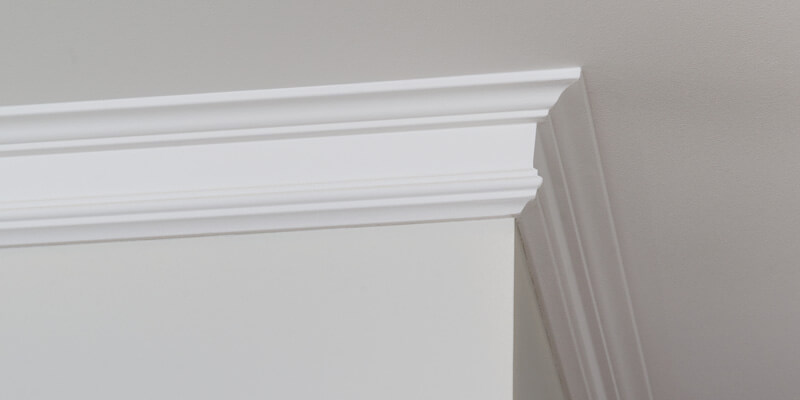Crown molding is a stylistic finishing component that is mainly used to trim cabinets, pillars, and interior walls where the wall joins the ceiling because it is only utilized at the top of a room. Moreover, the term “crown” indicates the adornment of any space or room.
To maintain crown molding, some users may get confused about what type of caulk for crown molding they should use. Versatile silicone caulk is the exact sort of caulk that can be used for crown molding. But there are a few more options for caulking in crown molding.
In this article, we will focus on these issues.
Type Of Caulk for Crown Molding: The Most Effective Sorts of Them
A crown molding usually gives a room a professional look. Using caulk on both the upper and lower sides of the crown molding is an excellent way to improve the appearance. Caulking the joints around crown molding is the best technique to ensure a good, firm finish, whether working on a new home or remodeling an older home.
Type 1- Silicone
Whenever someone is planning to do crown molding in a room, using silicone caulk is always preferable. Because it allows for resistance to temperature changes in a specific room, in the event that a room’s existing crown molding is white, one may not have to color the space after putting the caulk.
Type 2- Sikaflex Caulks
Because of their top quality and superior grade efficiency, Sikaflex caulks are the market leaders in the market for sealants. Sikaflex 1A, 15LM, 1CSL, 2C SL, 11FC, and other products are designed to perform exceptionally well in the case of crown molding and filling gaps. Sikaflex caulk can thus be used to caulk crown molding joints.
Type 3- Latex Caulk
Putting down loose tiles, bathtubs, showers, sinks, and toilets. Crown molding caulking and baseboards can be sealed with latex caulk. Acrylic Latex Siliconized Sealant, ALEX Flex Premium Molding & Trim is one of the most popular caulks for crown molding. Moreover, siliconized acrylic latex caulk is another superior caulk for this molding purpose.
Type 4- Sashco Big Stretch Caulk
Sashco’s big stretch caulk can absorb almost any movement of the surface without cracking. As a result, it’s suitable for numerous indoor and exterior uses, such as windows and doors, crown molding, door trim, and paneling.
Type 5- GE Silicone Caulk
The famous GE Silicone caulk has the ability to be used for both indoor and outdoor applications. For example, this can be used for wall sealing, bathroom ceiling fixing, and crown molding gaps. This caulk’s unique feature is that it is paintable and dries in 30 minutes.
The Significance of Caulking After Crown Molding
Suppose someone is concerned about how to caulk crown molding corner. First of all, he should know why caulking in crown molding is important. First of all, find the gap that has been created between the crown molding and the ceiling.
However, the spaces surrounding crown molding relate to construction materials’ limitations, home settling, and temperature changes in any particular room. In general, these three criteria work together to identify the size of the gaps and whether those gaps are seasonal or not.
When Should the Molding Be Caulked: Before Or After Painting
Caulking is the best solution for guaranteeing a gap-free crown molding at any time. However, sometimes people can paint over the crown molding caulking. And they were confused about when to caulk crown molding before or after painting.
Actually, this depends on the condition of the surface. But caulking before painting is easier than after. For residential development and extensive remodeling, painting is preferable. There is no need to tape this technique; otherwise, caulking can run over quickly before getting dry.
So, should you caulk crown molding or not? The simple answer is crown molding, which demands caulking at the top and bottom of a wall to disguise the gaps after it has been installed. When necessary, the user can re-caulk. Temperature variations will cause the caulk to expand and shrink, particularly if this is applicable to the outside wall.
Caulk Application On Crown Molding
Moreover, applying an appropriate caulk will ensure a long-lasting look for the crown. People used to look for ways to hide crown molding seams by caulking the molding as usual, then leaving a bead of caulk in the gap. This will help to keep the molding in place.
Then stop worrying about trying to make a cosmetic repair with the caulk. Instead, just simply fill in the gap and allow it to dry.
Why Is Crown Molding Needed?
When you explore the gap between your crown molding and sealing, you may feel the necessity of caulking them. Though there are a few more reasons to do this, such as:
- Building Supplies Limitations
- Organic Residence Establishment
- Thermal Variation
- Enhancing the home’s beauty
FAQ
What is the finest crown molding caulking to use?
What kind of molding caulk do you use?
Do you put caulk on your crown molding?
Can large gaps be caulked?
Wrapping Up!
Drop your concern about what type of caulk is for crown molding. For caulking crown molding, people used to apply latex, silicone, big stretch caulk, Sikaflex caulk, and GE silicone caulk.
Want to Learn More:
- How To Prevent Mold In Shower Caulk: 4 Ways Of Prevention
- How To Remove Mold From Under Silicone Caulk (5 Steps Process)
- What Type Of Caulk To Use For Quartz Countertops?
- How To Remove Wet Silicone Caulk – 5 Easiest Steps To Doing It
Hello! this is John Cox. If I’m not wrong, you love Home. Right? And you already met one of them who’ve been in this field since 2005 and still go on. According to my interest, I’ve started this blog to share my thoughts about Home sectors, and you’ll love it.


